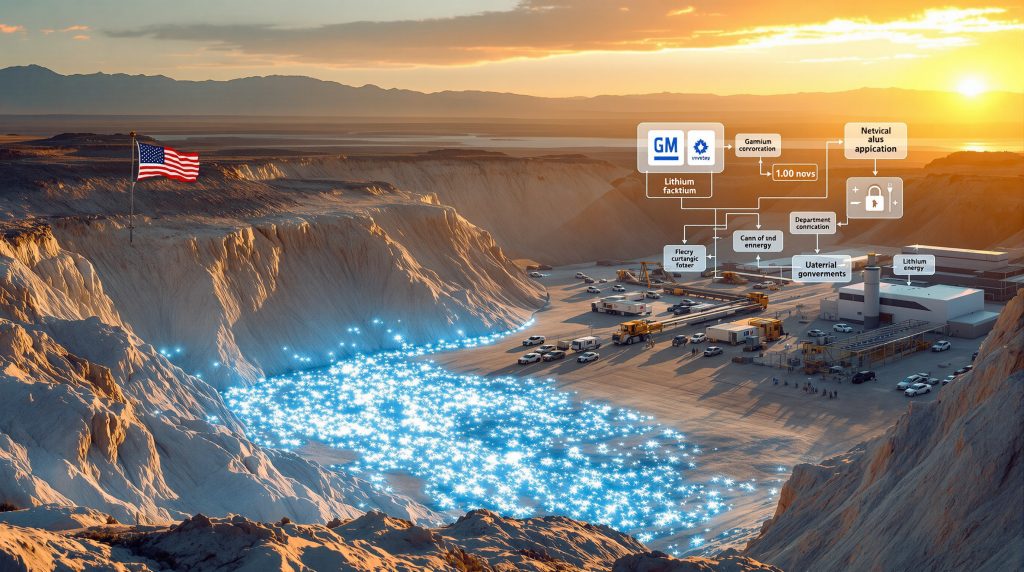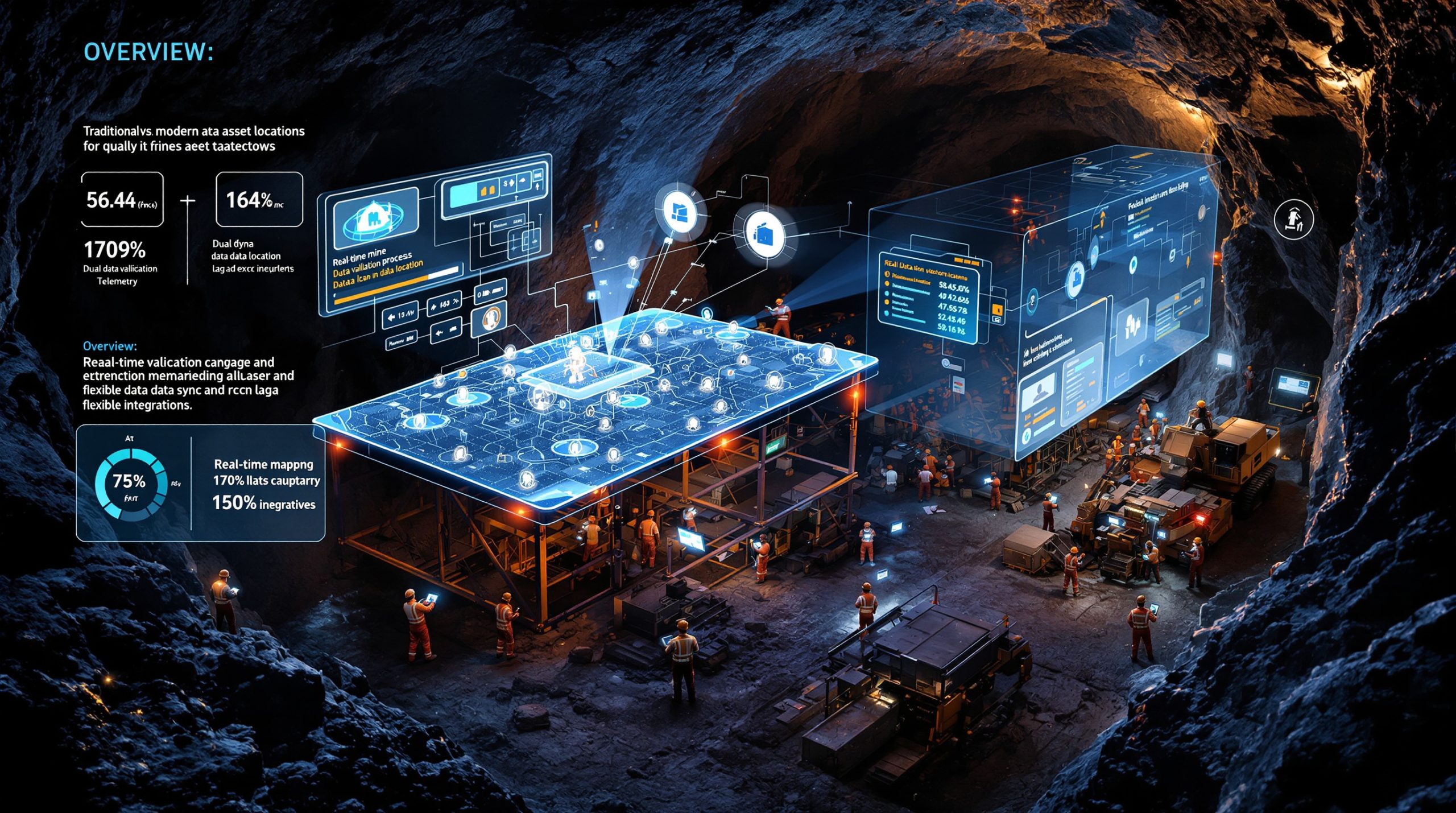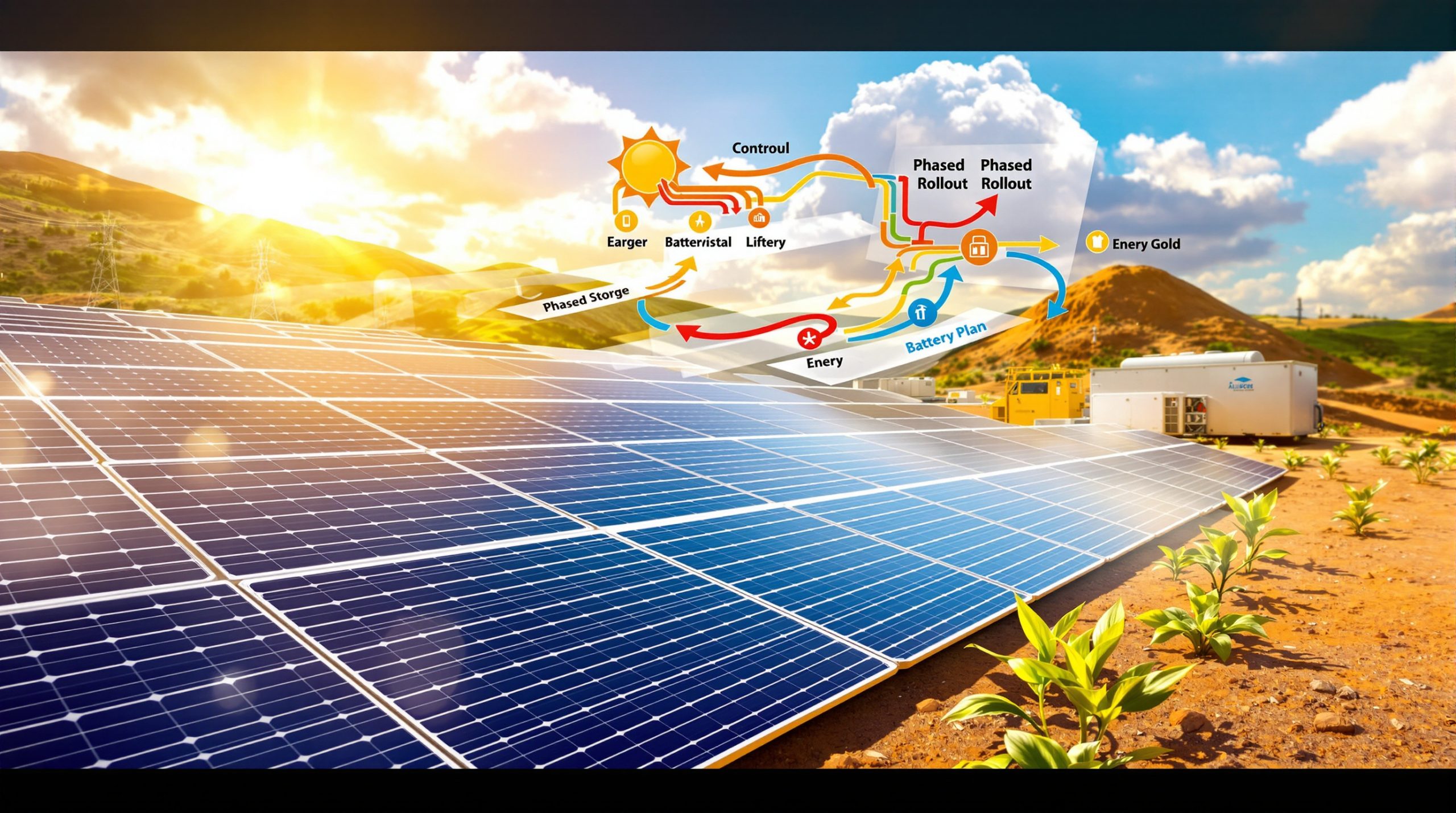What Makes Thacker Pass a Strategic Asset for US Energy Independence?
Nestled in the resource-rich landscape of Nevada's Humboldt County, Thacker Pass represents a watershed moment for America's clean energy ambitions. This ambitious lithium development is positioned to become the Western Hemisphere's largest lithium resource, transforming how North America secures critical battery materials for its growing electric vehicle industry.
The project's location approximately 100 miles north of Reno places it strategically within America's existing mining infrastructure while providing unprecedented access to domestic lithium reserves. With measured and indicated resources estimated at 13.7 million tonnes of lithium carbonate equivalent, Thacker Pass stands as North America's most significant clay-based lithium deposit.
The Unprecedented Scale of the Nevada Lithium Resource
Unlike traditional lithium sources that rely on hard rock mining or brine evaporation, Thacker Pass harnesses lithium-rich clay deposits. This distinctive geological formation allows for potentially more efficient extraction compared to conventional methods used globally. The sedimentary lithium clay deposits offer unique processing advantages while reducing some environmental impacts associated with other extraction techniques.
The scope of this resource cannot be overstated—when fully operational, Thacker Pass will dramatically reshape global lithium supply chains. Currently, the United States imports more than 95% of its lithium requirements, primarily from Argentina, Chile, and China, creating significant supply vulnerabilities for a material deemed essential to energy transition strategies.
The project's strategic importance extends beyond mere production volume. As global competition for battery materials intensifies, establishing a dominant domestic lithium source represents a crucial step toward energy independence and supply chain resilience.
Beyond Mining: The Complete Value Chain Approach
What truly distinguishes Thacker Pass is its integrated approach to lithium production. Rather than simply extracting raw materials for export and processing elsewhere, the project incorporates on-site processing capabilities to produce battery-grade lithium processing—the refined material required by battery manufacturers.
This integrated mine-to-battery-material approach significantly reduces supply chain vulnerabilities that have plagued North American manufacturing. By processing lithium carbonate domestically, the project eliminates multiple international shipping stages, reduces carbon emissions from transportation, and ensures quality control from extraction through refinement.
The technical approach employs sulfuric acid leaching followed by purification processes to yield battery-grade lithium carbonate that meets stringent specifications for electric vehicle batteries. This processing technology represents a significant advancement in domestic mineral processing capabilities.
Through this complete value chain strategy, Thacker Pass aims to reshape North American battery material dynamics, providing manufacturers with a secure, reliable source of critical materials while reducing dependence on potentially unstable international supply lines.
How Is the $2.26 Billion Federal Investment Structured?
The unprecedented federal support for Thacker Pass underscores the project's strategic importance to America's energy transition goals. In October 2023, the Department of Energy's Loan Programs Office announced a conditional $2.26 billion loan commitment—representing one of the largest government investments in critical minerals development in U.S. history.
This substantial federal backing signals a fundamental shift in how the government approaches critical mineral security, moving beyond policy statements to direct financial participation in strengthening domestic supply chains.
Breaking Down the Historic Government Support Package
The federal investment structure incorporates innovative features that protect taxpayer interests while supporting this strategic project. Beyond the substantial loan amount, the government will receive a 5% equity stake in Lithium Americas Corporation through no-cost warrants, plus an additional 5% ownership specifically in the Thacker Pass joint venture.
This equity component represents an evolution in government investment strategy. Rather than simply providing financial support, the arrangement ensures taxpayers benefit directly from the project's potential success while securing access to a critical resource. The structure resembles similar strategic investments in companies like MP Materials, which produces rare earth elements essential for defense applications.
The loan terms reflect the project's national importance—supporting the construction and commissioning of a facility designed to produce 40,000 metric tons annually of battery-grade lithium carbonate in its initial phase. This production volume provides sufficient material for approximately 800,000 electric vehicles per year once at full capacity.
The Market's Enthusiastic Response
Financial markets immediately recognized the significance of this federal backing. Following the announcement, Lithium Americas shares surged 34% in after-hours trading, reflecting investor confidence in both the project's viability and the strength of government support.
This dramatic market response demonstrates how government backing can catalyze private investment in strategic minerals. The stock movement suggests investors view federal participation as substantially de-risking the project's development timeline and financial outlook.
The enthusiastic market reception also signals broader confidence in domestic lithium development. As North America races to establish secure supply chains for battery materials, government backing provides critical validation of specific projects while potentially accelerating development timelines through financial certainty.
For the broader critical minerals sector, Thacker Pass represents a potential template for future public-private partnerships in resource development—combining government strategic interests with private sector expertise and operational capabilities.
What Production Timeline and Capacity Will Transform the Market?
Thacker Pass officially entered its construction phase in March 2023, initiating what will be a multi-year development process before reaching commercial production. The project follows an ambitious timeline aimed at delivering its first lithium carbonate by late 2027—a critical window as electric vehicle production scales dramatically across North America.
This development schedule aligns strategically with projected increases in domestic battery manufacturing capacity, ensuring lithium supply grows in concert with downstream demand from automakers and battery producers.
Phase 1 Development Milestones (2023-2027)
The initial construction phase includes significant site preparation work, development of access infrastructure, and establishment of key utility connections. According to Nevada Bureau of Land Management documents, the total project footprint covers approximately 17,933 acres of public land, requiring substantial preliminary development before processing facilities can be constructed.
Key milestones in the development timeline include:
- Initial site preparation and access development (2023-2024)
- Processing facility construction (2024-2026)
- Equipment installation and commissioning (2026-2027)
- Initial production targeted for late 2027
This four-year development schedule represents an accelerated timeline compared to many mining projects of similar scale, reflecting both the strategic importance of domestic lithium supply and the relatively accessible nature of the clay-based deposit compared to deep underground mining operations.
Production Capacity and Economic Impact
Thacker Pass's Phase 1 is designed to produce 40,000 metric tons annually of lithium carbonate equivalent—sufficient material to support approximately 800,000 electric vehicles per year by 2028. This production capacity positions the project to become the largest lithium source in the Western Hemisphere once fully operational.
The economic impacts extend far beyond the lithium market itself. During construction, the project is expected to create hundreds of direct jobs, with long-term operational employment providing stable, high-wage opportunities in rural Nevada. The project's total economic multiplier effect—including indirect jobs through suppliers and service providers—could generate significant regional economic development in an area traditionally dependent on agriculture and smaller-scale mining operations.
Beyond local economic benefits, the project's domestic production capacity directly supports manufacturing jobs across the electric vehicle supply chain—from battery production to vehicle assembly. By securing a key input material, Thacker Pass helps stabilize the broader EV manufacturing ecosystem throughout North America.
How Does the General Motors Partnership Strengthen the Project?
In January 2023, General Motors announced its strategic investment in Thacker Pass, committing up to $320 million to secure direct access to domestic lithium supply. This partnership represents a significant shift in how automotive manufacturers approach supply chain security for critical battery materials.
Rather than relying solely on commodity markets or third-party suppliers, GM's direct investment ensures priority access to lithium carbonate production—a strategic advantage as competition for battery materials intensifies globally.
Strategic Automotive Industry Alliance Structure
The partnership structure provides GM with significant influence over project development while securing offtake rights to a portion of the lithium production. Through its investment commitment, GM gains direct participation in project development decisions, quality specifications, and production priorities.
This arrangement offers mutual benefits:
- For GM, it secures a stable, domestic lithium supply with transparent pricing and reduced logistical complexity
- For Thacker Pass, it provides anchor customer certainty that enhances project financing and development security
The alignment with a major automaker also ensures lithium production meets precise quality specifications required for GM's Ultium battery platform, which powers vehicles ranging from the Cadillac Lyriq to the GMC Hummer EV. This direct connection between producer and end-user streamlines quality assurance processes while potentially reducing costly material rejection or reprocessing.
Vertical Integration Benefits for EV Production
The GM partnership represents a key element in the automaker's vertical integration strategy for electric vehicles. By securing direct lithium supply, GM reduces exposure to commodity price volatility while ensuring material availability regardless of market conditions.
This approach mirrors strategies employed by Tesla and other EV manufacturers that have increasingly sought direct control over raw material sourcing. The vertical integration provides competitive advantages through:
- Reduced supply uncertainty during periods of market tightness
- Potentially lower costs by eliminating intermediary margins
- Enhanced quality control through direct supplier relationships
- Reduced logistics complexity and transportation emissions
For consumers, this supply chain integration potentially translates to more stable EV pricing and production volumes, helping accelerate vehicle electrification by reducing manufacturing disruptions related to material shortages.
What Extraction and Processing Technologies Will Be Employed?
Thacker Pass employs distinctive processing technology tailored to its unique clay-based lithium resource. Unlike the dominant lithium sources globally—hard rock spodumene from Australia or brine operations in South America—the Nevada project utilizes sedimentary lithium clay deposits that require specialized extraction methods.
This technological approach represents both innovation opportunity and development challenge as the project scales to commercial production.
Innovative Clay-Based Lithium Extraction Methods
The extraction process begins with conventional open-pit mining to access the lithium-bearing clay deposits. However, the subsequent processing diverges significantly from traditional lithium production methods.
According to technical reports filed with regulatory authorities, the process employs sulfuric acid leaching to separate lithium from the clay matrix. This approach differs fundamentally from:
- Hard rock operations that use energy-intensive crushing, roasting and chemical processing
- Brine operations that utilize large evaporation ponds requiring years of lead time
The clay-based approach potentially offers several advantages, including faster processing time compared to brine operations and potentially lower energy requirements than hard rock processing. Additionally, the process can be optimized for water efficiency—a critical consideration in Nevada's arid environment.
Water usage is projected at approximately 1,700 gallons per minute from groundwater sources, according to environmental impact assessments. While substantial, this represents significantly less water consumption than many traditional mining operations of similar scale.
Battery-Grade Material Production Process
Following extraction, the process includes multiple purification steps to eliminate impurities and produce battery-grade lithium carbonate meeting stringent specifications for electric vehicle batteries. This multi-stage purification includes:
- Filtration to remove solid residues
- Chemical precipitation to eliminate impurities
- Crystallization to produce battery-grade lithium carbonate
The quality control systems must ensure consistent lithium carbonate with 99.5% purity or greater—a requirement for high-performance EV batteries. This quality level demands sophisticated process control systems and analytical testing throughout production.
The facility design incorporates scalability features allowing for potential future expansion beyond the initial 40,000 metric ton annual production target. This forward-looking design acknowledges the rapidly growing demand for battery materials as electric vehicle adoption accelerates globally.
How Will Thacker Pass Impact Global Lithium Supply Dynamics?
The emergence of Thacker Pass as a major lithium producer will significantly alter global supply dynamics for this critical battery material. As the largest lithium resource in the Western Hemisphere, the project will reduce North America's near-total dependence on imported materials while potentially influencing global pricing and availability patterns.
Understanding the project's impact requires examining current production concentration and how this new domestic source reshapes regional supply balance.
Reshaping Regional Production Distribution
Current global lithium production remains highly concentrated geographically. According to U.S. Geological Survey data, Australia produced approximately 61,000 metric tons of lithium in 2022, representing about 52% of global production. Other significant producers include Chile, China, and Argentina, with minimal production from North America.
This concentration creates significant supply vulnerabilities for North American manufacturers. The U.S. currently imports 100% of its lithium compounds, with no domestic mine production as of 2023. This complete import dependence exposes manufacturers to:
- Supply disruptions from political instability
- Shipping delays and logistical complications
- Foreign export restrictions or preferential domestic allocation
- Price volatility from concentrated supplier control
Thacker Pass, with its projected 40,000 metric ton annual production, would represent a transformative shift in this dynamic—potentially supplying a significant portion of North American demand from a single domestic source. This production would reduce both physical supply risk and geopolitical leverage currently held by major supplying nations.
Price and Availability Implications
The introduction of substantial North American production capacity will likely influence global lithium markets beyond simple supply volume additions. The project's impact may include:
- Reduced price premiums for North American buyers through eliminated international shipping costs and tariffs
- Greater supply certainty for regional manufacturers, potentially enabling more aggressive EV production scaling
- Potential moderation of global price volatility through diversified supply sources
- Competitive pressure on international producers to maintain cost efficiency
For battery manufacturers and automakers with North American production facilities, the proximity advantage reduces both costs and supply chain complexity. Eliminating international shipping reduces lead times from months to weeks, while simplifying logistics coordination and reducing transportation-related carbon emissions.
The domestic production source also provides natural hedging against currency fluctuations that affect international purchasing costs—a significant advantage during periods of dollar volatility.
What Environmental Sustainability Measures Are Being Implemented?
Developing a project of Thacker Pass's scale requires comprehensive environmental management strategies, particularly in Nevada's sensitive desert ecosystem. The project has incorporated multiple sustainability measures into its design, addressing water conservation, carbon footprint reduction, and long-term land reclamation planning.
These environmental considerations have been central to both regulatory approvals and social license considerations.
Water Conservation in an Arid Region
Water management represents one of the most critical environmental considerations for mining operations in Nevada's arid environment. According to environmental impact assessments filed with the Nevada Division of Environmental Protection, the project design incorporates several water conservation approaches:
- Process water recycling systems to minimize fresh water requirements
- Closed-loop water circuits throughout processing operations
- Monitoring systems to detect and prevent groundwater impacts
- Water usage efficiency technologies to reduce consumption per ton of production
The project's total water requirements—approximately 1,700 gallons per minute according to regulatory filings—represent a significant but manageable demand on local resources. The water management plan includes comprehensive monitoring of both usage volumes and potential impacts on surrounding groundwater systems.
Compared to traditional lithium brine operations in South America, which often require extensive evaporation ponds with high water loss rates, the clay-based processing potentially offers improved water efficiency per ton of lithium produced.
Carbon Footprint Reduction Strategies
While specific carbon reduction targets haven't been publicly detailed in available documents, several aspects of the project design contribute to emissions reduction compared to international lithium sourcing:
- Elimination of international shipping emissions for North American end-users
- Potential for renewable energy integration in processing operations
- Process efficiency improvements reducing energy consumption per ton produced
- Reduction in transportation emissions through supply chain localization
The project's overall carbon footprint will ultimately depend on implementation details, including energy sourcing decisions and processing optimization. As climate considerations increasingly influence both regulatory requirements and customer preferences, the project's carbon performance will remain a key performance indicator.
Long-term land reclamation planning has been incorporated into the project design from inception, with detailed closure plans included in regulatory submissions. These plans address post-mining land use restoration, infrastructure removal, and environmental monitoring requirements after operational closure.
How Does Thacker Pass Compare to International Lithium Projects?
Thacker Pass enters a global lithium market dominated by established production centers using fundamentally different extraction technologies. Understanding its competitive positioning requires comparing its clay-based approach with traditional hard rock mining in Australia and brine operations in South America's "Lithium Triangle."
These comparisons reveal both advantages and challenges for the Nevada project as it seeks to establish itself in the global market.
Comparative Analysis with Australian Hard Rock Operations
Australia dominates global lithium production through hard rock mining of spodumene deposits, primarily in Western Australia's Pilbara region. These operations differ significantly from Thacker Pass in several key aspects:
- Resource Type: Hard rock spodumene versus clay-based lithium
- Extraction Process: Energy-intensive crushing, concentration and chemical processing versus acid leaching
- Production Timeline: Typically faster initial development but higher operating costs
- Energy Requirements: Generally higher energy intensity for hard rock processing
The clay-based approach potentially offers processing efficiency advantages over hard rock operations, which require multiple energy-intensive crushing and concentration steps before chemical processing. However, the commercial-scale application of clay processing technology remains less proven than established hard rock methods, presenting both opportunity and risk.
Scale comparisons show Thacker Pass's projected 40,000 metric ton annual production would place it among the world's largest individual lithium operations—comparable to major Australian producers like Greenbushes and Pilgangoora, though with different product specifications and market positioning.
Advantages Over South American Brine Operations
South America's "Lithium Triangle"—spanning Chile, Argentina, and Bolivia—produces lithium through brine evaporation, a fundamentally different process than Thacker Pass's approach. Key differentiators include:
- Production Timeline: Brine operations typically require 18-24 months for initial evaporation versus potentially faster processing for clay deposits
- Weather Dependency: Brine evaporation relies heavily on consistent weather conditions versus controlled processing for clay operations
- Water Consumption: Brine operations often face significant water loss through evaporation in already-arid regions
- Land Footprint: Brine operations require extensive evaporation pond networks covering thousands of acres
The clay-based approach potentially offers more consistent production scheduling regardless of weather conditions—a significant advantage over brine operations that can face production delays during unusual weather patterns. This production reliability could provide strategic advantages for supply chain planning and customer commitments.
The quality consistency from controlled processing environments may also offer advantages over brine operations, which can face natural variability in brine concentration and impurity profiles based on specific extraction locations and seasonal factors.
What Regulatory and Community Engagement Approaches Are Being Used?
Developing a project of Thacker Pass's scale requires navigating complex regulatory frameworks while maintaining productive relationships with diverse stakeholders, including local communities, environmental organizations, and tribal groups. The project's approach to these challenges has featured both standard regulatory compliance and innovative engagement strategies.
Federal and State Permitting Progress
Thacker Pass secured its foundational federal approval in January 2021 when the Bureau of Land Management issued its Record of Decision following a comprehensive four-year environmental review process. This key milestone authorized the use of approximately 17,933 acres of public land for mining operations and associated infrastructure.
The regulatory journey has included multiple specialized permits from both federal and state authorities:
- Nevada Division of Environmental Protection water and air quality permits
- Federal environmental impact assessment under the National Environmental Policy Act
- Mining plan approvals and reclamation bonding requirements
- Water rights allocations through Nevada's regulated water management system
However, the permitting process has not proceeded without challenges. Multiple lawsuits have been filed against the project by environmental organizations and tribal groups, raising concerns about potential impacts on cultural resources, wildlife habitat, and water resources. These legal challenges represent a common feature of major resource development projects in the contemporary regulatory environment.
Local Community Relations and Economic Benefits
The project's community engagement strategy has emphasized economic development benefits for Nevada's rural communities, including:
- Direct employment opportunities during both construction and operations
- Indirect economic benefits through local procurement and services
- Tax revenue generation for local and state governments
- Workforce development programs to maximize local hiring potential
While specific employment projections haven't been publicly detailed in available documents, mining operations of similar scale typically create hundreds of direct jobs during operations, with additional employment during construction phases. These positions generally offer wages significantly above regional averages, providing substantial economic benefits in rural areas.
The project has faced some community opposition, primarily centered on environmental concerns and potential impacts on cultural resources. Addressing these concerns has required ongoing stakeholder engagement efforts and potential modifications to operational plans to accommodate community feedback.
How Is Thacker Pass Advancing US Critical Minerals Security?
Thacker Pass represents a cornerstone of America's emerging strategy to secure domestic supplies of materials deemed critical to economic and national security. As lithium demand increases exponentially for both civilian and defense applications, the project addresses fundamental supply vulnerabilities in current critical mineral supply chains.
Alignment with National Security Objectives
The U.S. Geological Survey designates lithium as one of 50 minerals "essential to the economic and national security of the United States." This designation acknowledges both lithium's growing importance for energy transition and its applications in defense technologies, including advanced batteries, aerospace components, and specialized alloys.
The current complete import dependence for lithium compounds creates significant national security vulnerabilities:
- Potential supply disruptions during international conflicts
- Limited emergency response capability for battery-dependent systems
- Vulnerability to foreign export restrictions or preferential domestic allocation
- Strategic disadvantage in technology development requiring stable lithium access
By establishing a major domestic lithium source, Thacker Pass directly addresses these vulnerabilities while creating redundancy in supply chains currently concentrated in a limited number of countries. This diversification represents a core component of mineral security strategy—reducing dependency on any single source or region.
The project's strategic importance extends beyond simple supply availability to encompass technological development capabilities. Domestic production enables closer collaboration between material producers, battery manufacturers, and technology developers—potentially accelerating innovation in battery technologies requiring consistent, high-quality lithium compounds.
Policy Framework Supporting the Development
Thacker Pass benefits from a supportive policy environment created through multiple federal initiatives designed to strengthen domestic critical mineral supply chains. Key policy frameworks include:
- The Inflation Reduction Act's domestic content provisions for EV tax credits
- Defense Production Act authorities applied to critical minerals
- Department of Energy loan programs specifically targeting battery supply chains
- Bipartisan congressional support for reducing foreign mineral dependency
This policy framework provides both direct financial support through mechanisms like the $2.26 billion DOE loan and indirect support through demand creation via tax incentives for vehicles using domestically-sourced materials.
The project represents a concrete implementation of strategic directives from multiple administrations to strengthen domestic supply chains for materials essential to both economic competitiveness and national security. As global competition for critical minerals intensifies, Thacker Pass stands as a cornerstone of America's strategy to ensure material availability for its growing clean energy and defense technology requirements.
What Challenges and Risk Factors Could Impact Development?
Despite its strategic importance and substantial government support, Thacker Pass faces significant challenges and risk factors that could impact its development timeline, production capacity, and economic viability. Understanding these challenges requires examining both project-specific technical issues and broader market dynamics affecting the lithium sector.
Technical and Operational Considerations
The project faces several technical challenges inherent to pioneering large-scale clay-based lithium extraction:
- Process Scaling Risk: While the extraction technology has been demonstrated at pilot scale, scaling to commercial production volumes may encounter unexpected technical challenges requiring design modifications
- Water Management Complexity: Operating in Nevada's arid environment requires sophisticated water management systems to meet both operational needs and environmental standards
- Specialized Workforce Requirements: The operation requires specialized technical expertise that may be challenging to recruit in sufficient numbers for a rural Nevada location
- Infrastructure Development Needs: The relatively remote location necessitates significant investment in supporting infrastructure, including power transmission, transportation, and water management systems
These technical challenges are not uncommon for pioneering resource projects, but they represent genuine development risks that could affect both timeline and costs. The project's extended development schedule provides time to address these challenges, but technical surprises during scale-up remain a persistent risk factor.
Market and Economic Variables
Beyond project-specific technical considerations, Thacker Pass faces broader market risks that could impact its long-term economic performance:
- Lithium Price Volatility: The lithium market has experienced significant price fluctuations, with prices reaching record highs in 2022 before moderating. This volatility complicates financial planning and return calculations
- Evolving EV Adoption Rates: Lithium demand projections depend heavily on electric vehicle adoption rates, which remain subject to technological, regulatory, and consumer preference uncertainties
- Alternative Battery Chemistry Competition: Emerging battery technologies using reduced lithium content or alternative materials could potentially impact long-term demand growth
- International Supply Competition: New lithium production is being developed globally, potentially creating future oversupply scenarios if demand growth doesn't match production capacity additions
The project's strategic partnerships, particularly with General Motors, provide some insulation against market volatility through guaranteed offtake arrangements. However, broader lithium market challenges will inevitably influence the project's economic performance and return on investment.
The substantial government support through the Department of Energy loan significantly mitigates financial risks by providing stable, long-term capital at potentially advantageous rates. This financial backing helps insulate the project from near-term market fluctuations while ensuring development can proceed despite temporary market headwinds.
FAQ: Thacker Pass Lithium Project
When will Thacker Pass begin commercial lithium production?
Current project timelines indicate initial production will commence in late 2027, following the construction phase that began in March 2023. The extended development timeline reflects both the project's scale and the comprehensive infrastructure requirements for this pioneering operation.
How much lithium will Thacker Pass produce annually?
The project is designed to produce 40,000 metric tons of battery-quality lithium carbonate per year in its initial phase. This production volume provides sufficient lithium to support approximately 800,000 electric vehicles annually by 2028, establishing Thacker Pass as the Western Hemisphere's largest lithium source.
Who are the major stakeholders in the Thacker Pass project?
Lithium Americas Corp. is developing the project through its subsidiary Lithium Nevada Corp., with General Motors as a strategic partner through a joint venture arrangement. The U.S. government, through the Department of Energy, has provided substantial financial backing through a $2.26 billion loan while securing equity positions in both the parent company (5% stake) and the Thacker Pass joint venture (additional 5% stake).
How is the US government supporting the development?
The Department of Energy has provided a $2.26 billion loan to support project development. Additionally, the government will receive a 5% stake in Lithium Americas plus an additional 5% stake specifically in the Thacker Pass joint venture through no-cost warrants. This innovative structure ensures taxpayers benefit from the project's potential success while securing strategic access to domestic lithium production.
What makes Thacker Pass different from other lithium sources?
Thacker Pass utilizes clay-based lithium extraction rather than traditional hard rock mining or brine evaporation methods used by major international producers. This approach potentially offers processing efficiency advantages, reduced water consumption compared to some alternatives, and more consistent production scheduling regardless of weather conditions. Additionally, its location within the United States provides significant supply chain security benefits for North American manufacturers.
How will Thacker Pass benefit the US electric vehicle industry?
By providing a secure domestic source of battery-grade lithium, the project will reduce supply chain vulnerabilities that currently affect North American EV production. Benefits include reduced logistics complexity, elimination of international shipping delays, potential cost savings through regional sourcing, and enhanced supply security during periods of international market tightness. These advantages support expanded EV manufacturing capacity throughout North America while potentially accelerating technology development through closer producer-manufacturer collaboration.
Want to Spot the Next Major Mineral Discovery Before the Market?
Discover how investors leveraged significant ASX mineral discoveries for substantial returns using Discovery Alert's proprietary Discovery IQ model. Visit the discoveries page today to understand historic returns and position yourself ahead of the market with real-time alerts.




